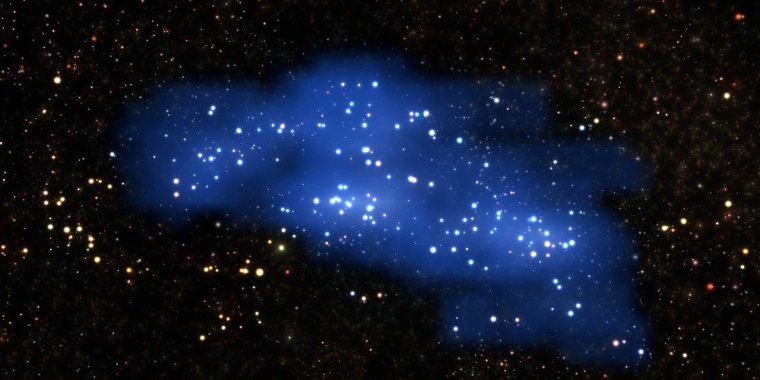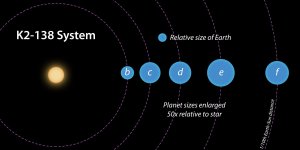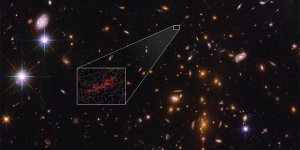| News / Space News |
Largest Galaxy Proto-Supercluster Found
A team of astronomers, led by Olga Cucciati of Istituto Nazionale di Astrofisica (INAF) Bologna, have used the VIMOS instrument on ESO’s Very Large Telescope (VLT) to identify a gigantic proto-supercluster of galaxies forming in the early Universe, just 2.3 billion years after the Big Bang. This structure, which the researchers nicknamed Hyperion, is the largest and most massive structure to be found so early in the formation of the Universe.

The Hyperion Proto-Supercluster. Image credit: ESO (CC BY 4.0)
The enormous mass of the proto-supercluster is calculated to be more than one million billion times that of the Sun. This titanic mass is similar to that of the largest structures observed in the Universe today, but finding such a massive object in the early Universe surprised astronomers.
Located in the COSMOS field in the constellation of Sextans (The Sextant), Hyperion was identified by analysing the vast amount of data obtained from the VIMOS Ultra-deep Survey led by Olivier Le Fèvre (Aix-Marseille Université, CNRS, CNES).
The VIMOS Ultra-Deep Survey provides an unprecedented 3D map of the distribution of over 10 000 galaxies in the distant Universe.
The team found that Hyperion has a very complex structure, containing at least 7 high-density regions connected by filaments of galaxies, and its size is comparable to nearby superclusters, though it has a very different structure.
This contrast is most likely due to the fact that nearby superclusters have had billions of years for gravity to gather matter together into denser regions — a process that has been acting for far less time in the much younger Hyperion.
Given its size so early in the history of the Universe, Hyperion is expected to evolve into something similar to the immense structures in the local Universe such as the superclusters making up the Sloan Great Wall or the Virgo Supercluster that contains our own galaxy, the Milky Way.
Understanding Hyperion and how it compares to similar recent structures can give insights into how the Universe developed in the past and will evolve into the future. (ESO)
YOU MAY ALSO LIKE


